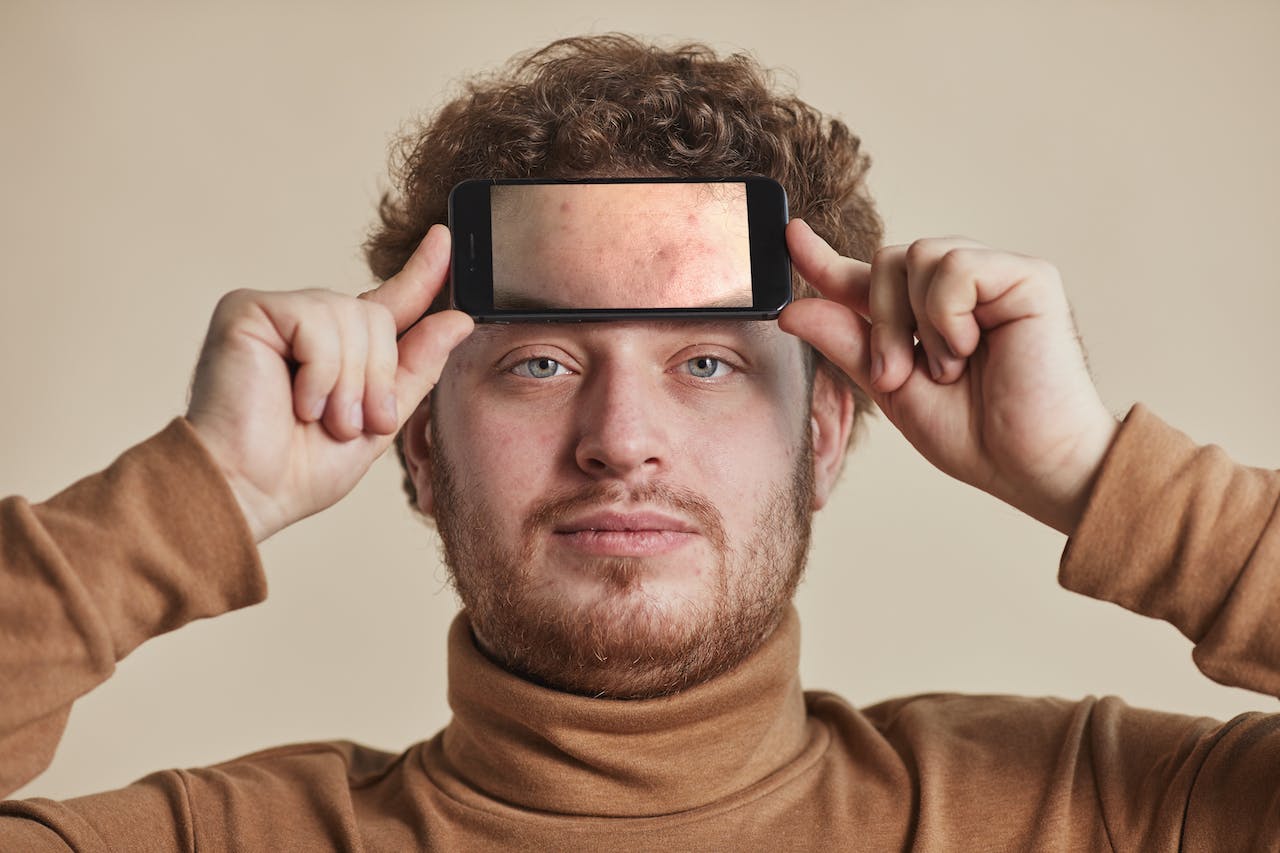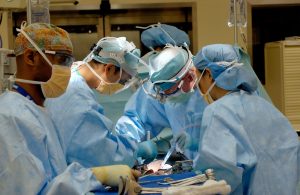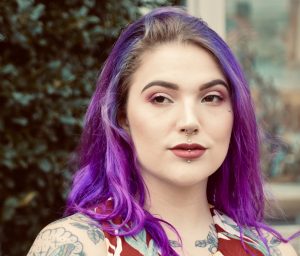
Are you troubled by a bumpy and rough texture on your forehead, but uncertain about its cause? This article delves into the various factors contributing to forehead bumps, exploring beyond the realm of acne and pimples. Whether you’re battling dry skin, an allergic reaction, or an underlying skin condition, understanding the root cause is crucial for effective treatment.
This comprehensive guide provides insights into common triggers, treatment options, natural remedies, and dietary tips for maintaining overall skin health. If you’re seeking clarity on why your forehead feels bumpy and rough, and looking for practical solutions, this article is tailored for you.
Table of Contents
ToggleKey Takeaways
- Forehead bumps may be caused by factors such as acne, dry skin, allergic reactions, contact dermatitis, heat rash, over-exfoliation, and underlying skin conditions like eczema or psoriasis.
- Treatment options vary based on the cause, ranging from OTC acne creams for acne to identifying and avoiding allergens for allergic reactions.
- Surgical removal may be necessary for lipomas, but attempting to squeeze or pop cysts at home can lead to infection and scarring.
- Natural remedies like tea tree oil, aloe vera, ice compress, honey, cinnamon masks, and oatmeal masks can be effective for certain types of forehead bumps.
- Maintaining a healthy diet, including staying hydrated, consuming omega-3 fatty acids, antioxidant-rich foods, and limiting dairy and processed foods, can contribute to overall skin health.
- Best practices for managing forehead bumps include regular cleansing, gentle exfoliation, moisturizing, using non-comedogenic products, avoiding unnecessary touching of the face, keeping hair clean, and prioritizing sun protection.
- Regular exercise and proper post-exercise skincare are essential for promoting circulation and preventing pore clogging.
Why Does My Forehead Feel Bumpy and Rough?
A bumpy and rough texture on the forehead can be attributed to various factors. Forehead bumps are not always caused due to acne or pimples. Here are some common reasons:
- Acne or Pimples: The forehead is a common area for acne breakouts due to the presence of oil glands. If you’re experiencing bumps, they could be acne or pimples.
- Dry Skin: Dry skin can lead to roughness. Ensure that you are moisturizing your skin regularly, especially if you live in a dry climate or during the winter months.
- Allergic Reaction: An allergic reaction to a skincare product, makeup, or hair product could cause bumps and roughness. Consider if you’ve recently introduced a new product into your routine.
- Contact Dermatitis: You may have come into contact with an irritant, leading to inflammation and roughness.
- Heat Rash: If you’ve been exposed to excessive heat or sweat, you might develop a heat rash, which can cause small bumps and discomfort.
- Exfoliation: Over-exfoliating the skin can lead to irritation and roughness. Make sure you’re not using harsh exfoliants too frequently.
- Underlying Skin Conditions: Conditions like eczema or psoriasis can cause rough patches on the skin. If you have a persistent issue, it’s important to consult with a dermatologist for a proper diagnosis.
Also Read: Skin SOS: Navigating Cold Sores and Pimples 101
Treating Bumps On Your Forehead
Forehead bumps can have various causes, and the appropriate treatment options depend on the underlying issue. It’s important to identify the cause before attempting any specific treatment. Here are some common causes and corresponding treatment options:
-
Acne:
- Over-the-counter (OTC) acne creams or gels containing benzoyl peroxide or salicylic acid.
- Prescription medications, such as topical retinoids or oral antibiotics.
- Proper skincare routine, including gentle cleansing and avoiding excessive oil-based products.
-
Allergic Reactions:
- Identify and avoid the allergen or irritant causing the reaction.
- OTC antihistamines to alleviate itching and redness.
- Topical corticosteroid creams for inflammation (use under the guidance of a healthcare professional).
-
Heat Rash:
- Keep the forehead cool and dry.
- Wear breathable clothing.
- OTC hydrocortisone cream for itching and inflammation.
-
Contact Dermatitis:
- Identify and avoid the substance causing the reaction.
- OTC hydrocortisone cream for inflammation.
- Cold compresses to soothe the affected area.
-
Cysts or Lipomas:
- Consult a dermatologist for proper evaluation and drainage if necessary.
- Do not attempt to squeeze or pop a cyst at home, as it can lead to infection and scarring.
- Surgical removal by a dermatologist or healthcare professional may be necessary.
-
Milia (Tiny White Bumps):
- Milia often resolve on their own, but gentle exfoliation may help.
- Avoid picking or squeezing as it can cause scarring.
- If persistent, consult a dermatologist for professional extraction.
-
Seborrheic Dermatitis:
- Use anti-dandruff shampoos containing ketoconazole or selenium sulfide.
- Topical corticosteroids may be prescribed by a dermatologist for more severe cases.
-
Folliculitis (Inflamed Hair Follicles):
- Keep the area clean and avoid shaving until the condition improves.
- Warm compresses and over-the-counter antibacterial ointments may help.
- Severe cases may require prescription antibiotics.
-
Lipomas (Fatty Tumors):
- Lipomas are generally harmless, but surgical removal may be considered for cosmetic reasons or if they cause discomfort.
- Consult a healthcare professional for proper evaluation.
-
Insect Bites:
- Clean the area with mild soap and water.
- Apply an over-the-counter anti-itch cream or take oral antihistamines.
- If there’s a severe reaction or signs of infection, seek medical attention.
Also Read: Why is My Scalp Tender to Touch on One Spot
Natural Remedies To Try at Home Bumps on Your Forehead
- Tea Tree Oil: Diluted tea tree oil may have antibacterial properties. Apply a small amount to the affected area.
- Aloe Vera: Apply pure aloe vera gel to soothe inflammation and promote healing.
- Ice Compress: Apply a cold compress to reduce swelling and inflammation.
- Honey and Cinnamon Mask: Mix honey and cinnamon to form a paste. Apply to the forehead, leave on for 15-20 minutes, and then rinse.
- Oatmeal Mask: Mix oatmeal with water to create a paste. Apply to the forehead, leave on until it dries, and then rinse.
- Warm Compress: A warm compress is beneficial for conditions like cysts, boils, or certain types of acne. It helps to increase blood flow, reduce pain, and promote drainage.
Managing Forehead Bumps with a Healthy Diet
Forehead bumps can be caused by various factors, including skin conditions, allergies, or hormonal imbalances. While diet alone may not be a cure, maintaining a healthy diet can contribute to overall skin health and may help reduce the occurrence of skin issues. Here are some general dietary tips that may be beneficial:
- Stay Hydrated: Drinking an adequate amount of water helps keep your skin hydrated, promoting overall skin health.
- Eat a Balanced Diet: Include a variety of fruits, vegetables, whole grains, lean proteins, and healthy fats in your diet. These provide essential nutrients that support skin health.
- Omega-3 Fatty Acids: Foods rich in omega-3 fatty acids, such as fatty fish (salmon, mackerel, and sardines), flaxseeds, and walnuts, may have anti-inflammatory properties that can benefit the skin.
- Antioxidant-Rich Foods: Consume foods high in antioxidants, such as berries, green leafy vegetables, and nuts. Antioxidants help protect the skin from oxidative stress.
- Limit Dairy and Processed Foods: Some people find that reducing dairy and processed foods can improve their skin condition. Dairy, in particular, may be linked to acne in some individuals.
- Probiotics: Probiotics, found in yogurt and fermented foods, may promote gut health, which can have a positive impact on the skin.
- Avoid Trigger Foods: If you notice that certain foods exacerbate your skin condition, consider avoiding them. Common triggers include spicy foods, chocolate, and high-sugar items.
Also Read: Who is Susceptible to Big Dandruff Flakes?
Best Practices for Managing Bumps on Your Forehead
Managing forehead bumps involves maintaining good skincare practices and making lifestyle choices that support healthy skin. Here are some tips to help prevent forehead bumps:
- Cleanse Regularly: Gently cleanse your face twice a day with a mild, fragrance-free cleanser. This helps remove dirt, oil, and makeup that can contribute to clogged pores.
- Exfoliate: Regular exfoliation can help remove dead skin cells and prevent clogged pores. Use a gentle exfoliating scrub or a chemical exfoliant with ingredients like salicylic acid or glycolic acid.
- Moisturize: Keep your skin hydrated with a non-comedogenic moisturizer. Moisturized skin is less prone to irritation and dryness, which can contribute to skin issues.
- Use Non-Comedogenic Products: Choose skincare and cosmetic products labeled as non-comedogenic, meaning they won’t clog pores. This can help reduce the risk of developing bumps and acne.
- Hands Off: Avoid touching your face unnecessarily, as this can transfer oils and bacteria from your hands to your skin, potentially leading to breakouts.
- Clean Hair and Forehead: If you have bangs or hair that falls on your forehead, make sure to keep it clean. Oily hair can contribute to forehead bumps, so washing your hair regularly is important.
- Sun Protection: Use a broad-spectrum sunscreen with at least SPF 30 to protect your skin from the harmful effects of UV rays. Sun damage can contribute to skin issues.
- Regular Exercise: Exercise promotes circulation and helps keep your skin healthy. Remember to cleanse your face after exercising to remove sweat and prevent pore clogging.
Final Thoughts
In the quest to decipher the mystery behind a bumpy and rough forehead, this article has provided a roadmap for understanding the various causes and effective treatments. By recognizing the triggers and implementing best practices, you can navigate the path toward smoother, healthier skin. Whether through targeted skincare, professional guidance, or lifestyle adjustments, taking control of forehead bumps is within reach. Armed with knowledge and practical tips, you can embark on a journey towards a clearer, more confident complexion.
Also Read: Skincare 101: A Complete Guide to Achieve a Healthy and Glowing Complexion
FAQs
- Q: Can forehead bumps be caused by factors other than acne?
- A: Yes, various factors like dry skin, allergic reactions, contact dermatitis, and underlying skin conditions can contribute to forehead bumps.
- Q: How should I treat acne-related forehead bumps?
- A: Options include OTC acne creams, prescription medications, and a proper skincare routine.
- Q: Is it safe to attempt squeezing or popping cysts at home?
- A: No, it’s not recommended. Consult a dermatologist for proper evaluation and treatment.
- Q: Are natural remedies effective for forehead bumps?
- A: Yes, remedies like tea tree oil, aloe vera, and honey-cinnamon masks can be effective for certain types of bumps.
- Q: Can diet affect forehead bumps?
- A: Yes, maintaining a healthy diet, staying hydrated, and consuming omega-3 fatty acids can contribute to overall skin health.
- Q: How can I prevent forehead bumps?
- A: Follow best practices, including regular cleansing, gentle exfoliation, using non-comedogenic products, and maintaining sun protection.
- Q: When should I consult a dermatologist for forehead bumps?
- A: If the issue persists or if you’re unsure of the cause, seek professional advice for a proper diagnosis.
#SkincareTips #HealthySkin #DermatologyInsights #ForeheadCare #ClearComplexion #SkinHealthJourney #AcneTreatment #NaturalRemedies #DietAndSkin #BestSkincarePractices #SunProtectionTips #ProfessionalAdvice #BeautifulSkin #FAQsOnSkinCare #ConfidentComplexion
Note: The information provided in this article is for educational purposes only and should not be taken as medical advice. For personalized health recommendations, it is always advisable to consult with a healthcare professional before incorporating any changes to your daily health routine.







No comment yet, add your voice below!